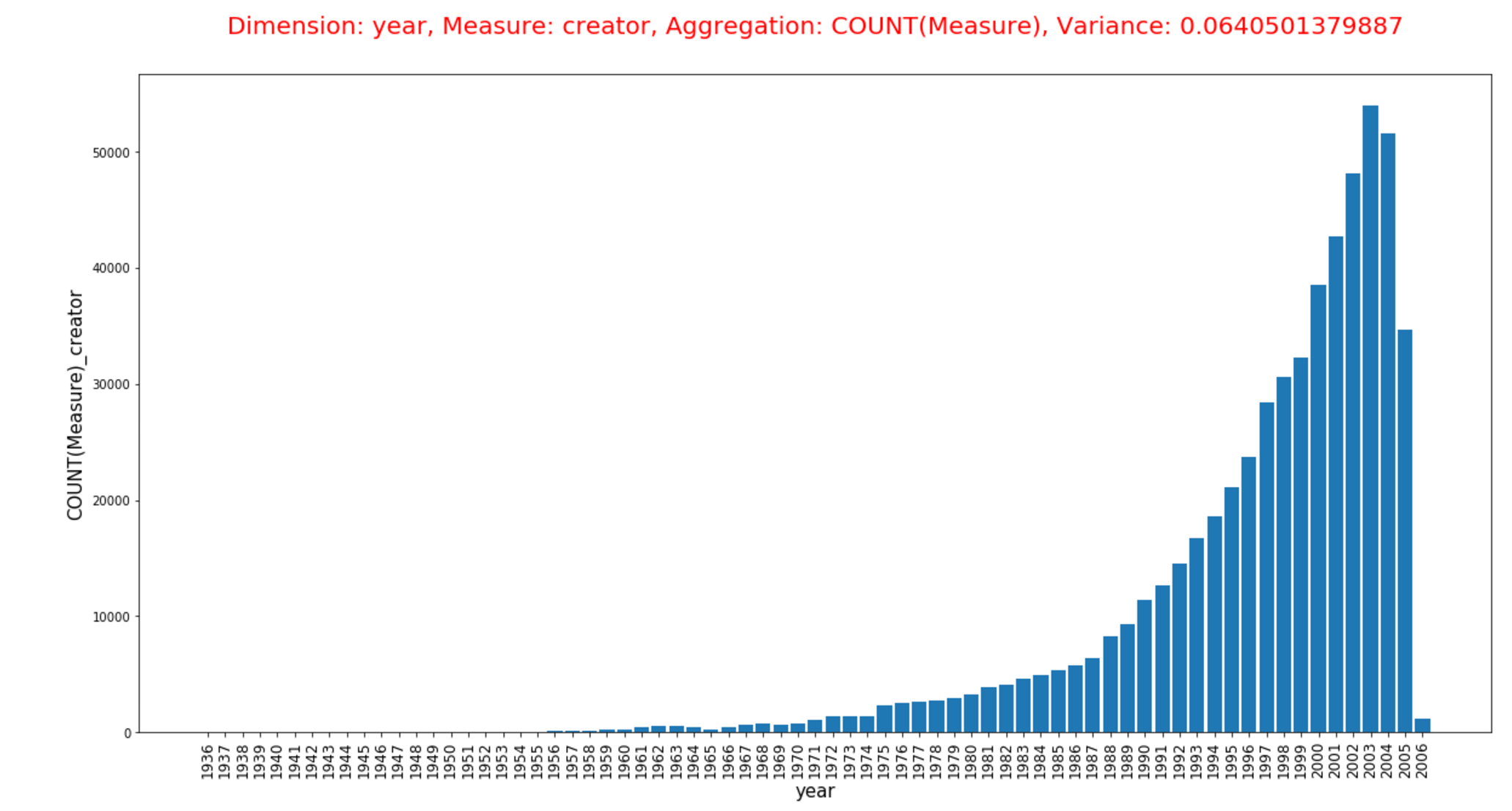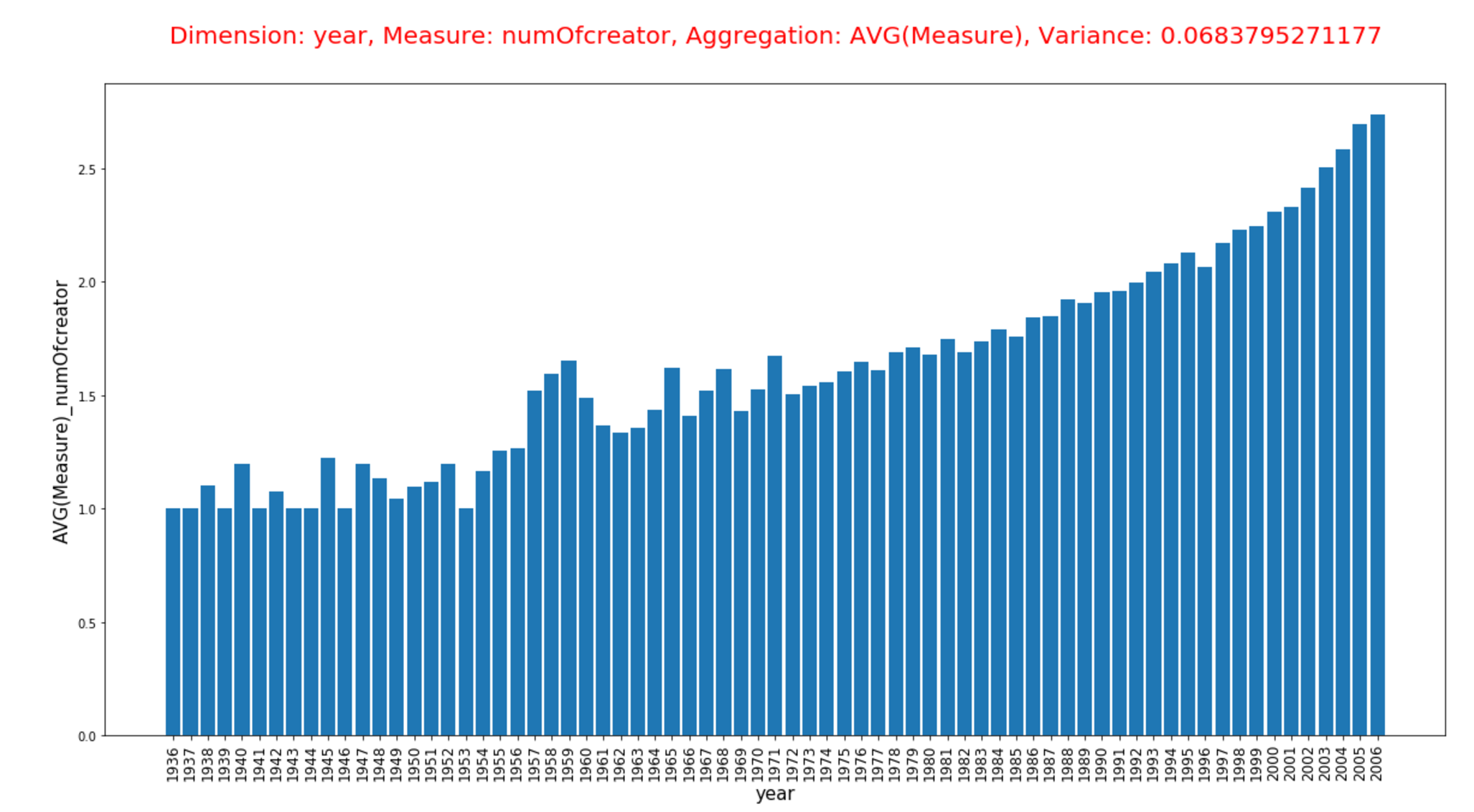RDF graphs are structurally complex and exploring them is hard. To help user discover interesting insights from RDF graph, we have developed Dagger, a tool for automatically identifying interesting aggregate queries over RDF graphs.
The short video below shows Dagger at work:
For instance, on an RDF graph with bibliography data, sample queries are:
1 . “For each year, how many authors have published conference papers that year”
2. “For each year, the average number of authors of conference papers published that year”
Dagger identifies candidate queries automatically based on the RDF graph, evaluates them and recommends the most interesting to the user. Note that the queries are derived from the graph, and their interestingness is evaluated for the specific graph at hand.
Some sample results based on DBLP bibliographic data can be found here: DBLP: type of book and article
A few selected plots appear below.
Candidate fact: articles (in DBLP)


References
[1] The World Wide Web Consortium (W3C). SPARQL protocol and RDF query language. https://www.w3.org/TR/rdf-sparql-query/
[2] Dario Colazzo, François Goasdoué, Ioana Manolescu, and Alexandra Roatis. RDF Analytics: Lenses over Semantic Graphs. In 23rd International World Wide Web Conference, Seoul, South Korea, April 2014.
[3] Yanlei Diao, Ioana Manolescu, and Shu Shang. “Dagger: Digging for Interesting Aggregates in RDF Graphs”, demonstration in the International Semantic Web Conference (ISWC), Vienna, October 2017.
[4] Ioana Manolescu, Mirjana Mazuran. “Speeding up RDF Aggregate Discovery through Sampling”, EDBT/ICDT Workshops 2019.




